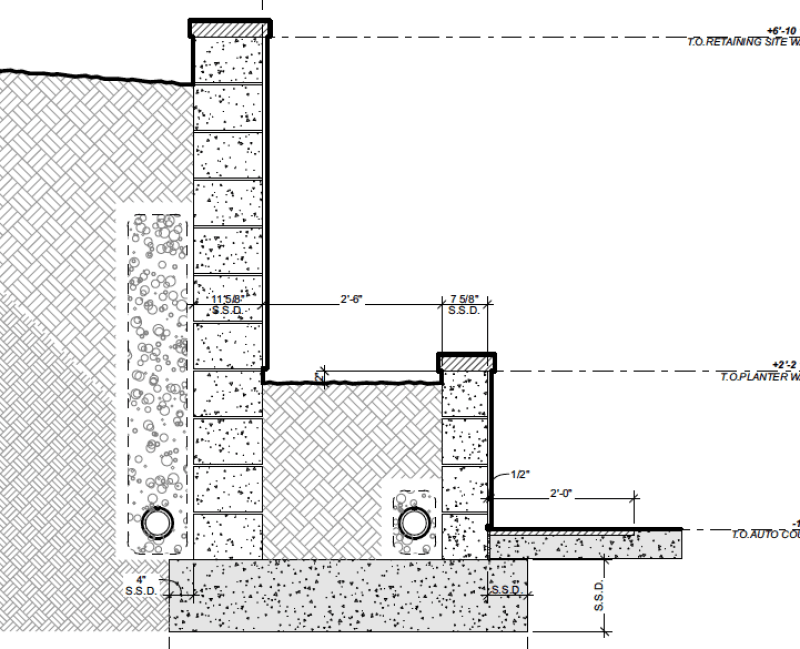I would not use a driveway slab as a restraint ever. A few things to consider is, is the slab concrete or asphalt, asphalt has no capacity for compression of this magnitude, hence why asphalt is not to be used as a restraint in the pole foundation formulas in the IBC. Concrete could maybe work, but is there enough weight. For 1000 plf sliding force, once you account for 0.6 DL, Friction coefficient and a 1.5 safety factor, you are going to need quite a bit of weight to resist sliding. Assuming friction coefficient = 0.3, that is around 8333 lbs weight per linear foot. That weight is a 6" concrete slab that is 111' wide per linear foot of retaining wall to resist sliding.. good luck... I honestly rarely even use restrained retaining walls now due to the actual calculation of restraint force needed at the top unless there is a load path to dump that loading into side walls or retaining on opposite like a basement. (if anyone has any good information for why this isn't correct, please share because I rarely see failures for such a case and know people will use even a 4' wide sidwalk to say restrained, and I just don't see how it works).
I would try burying the footing deeper and using a key, for something like this, there has to be a way to make that work. As others have said, the contractor and owner have to just live with it and understand that the nature of such a retaining wall with property line footing.


